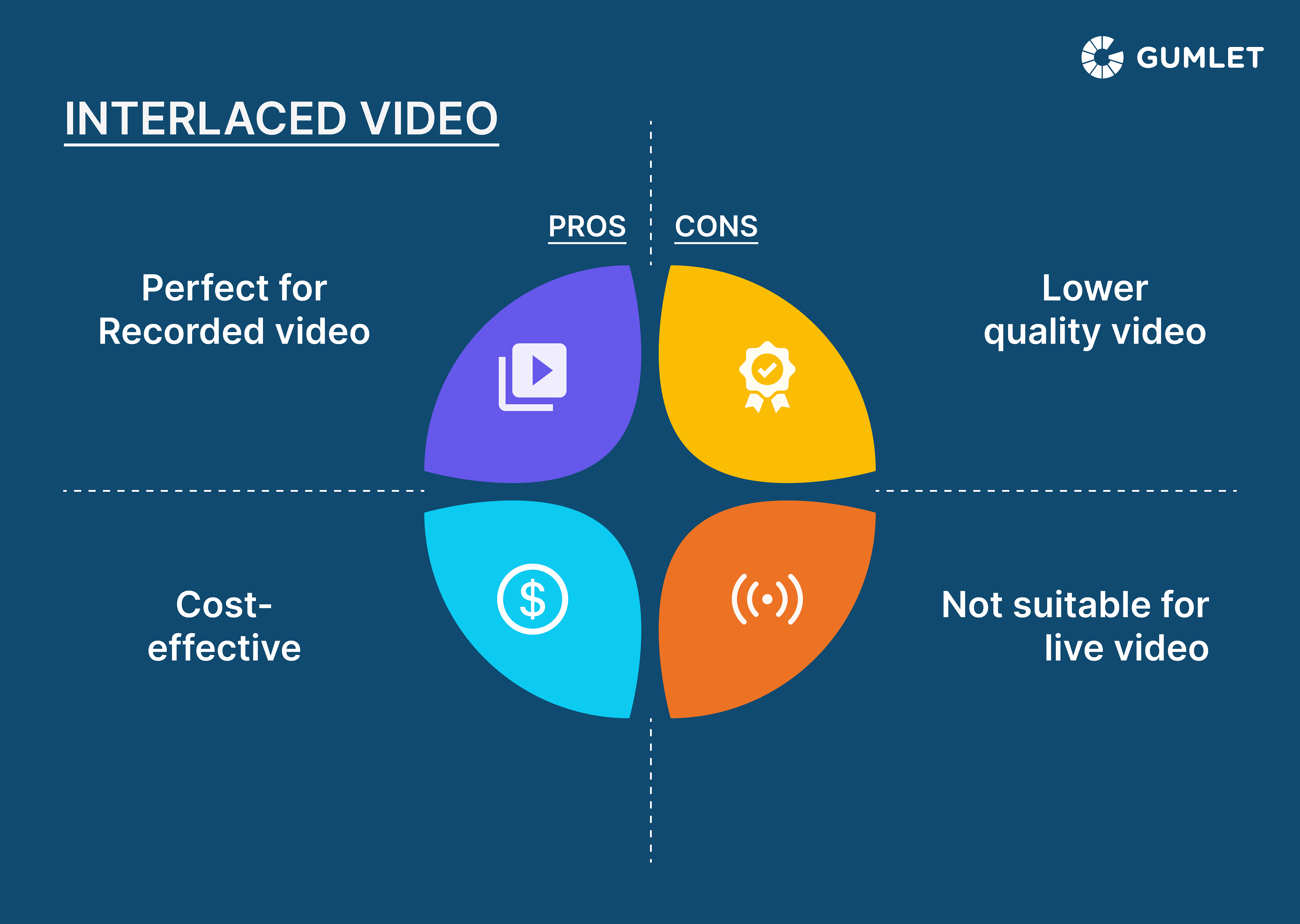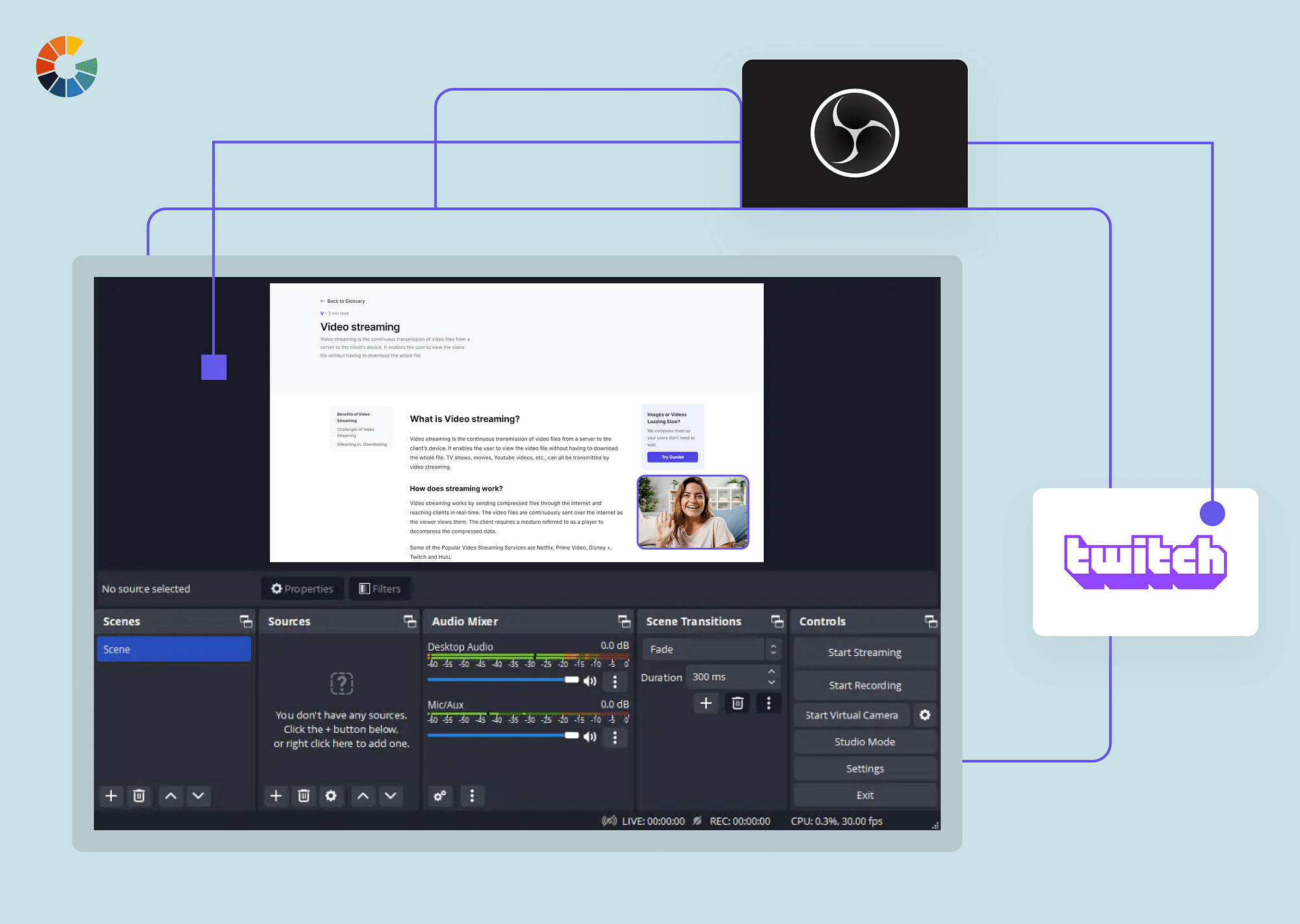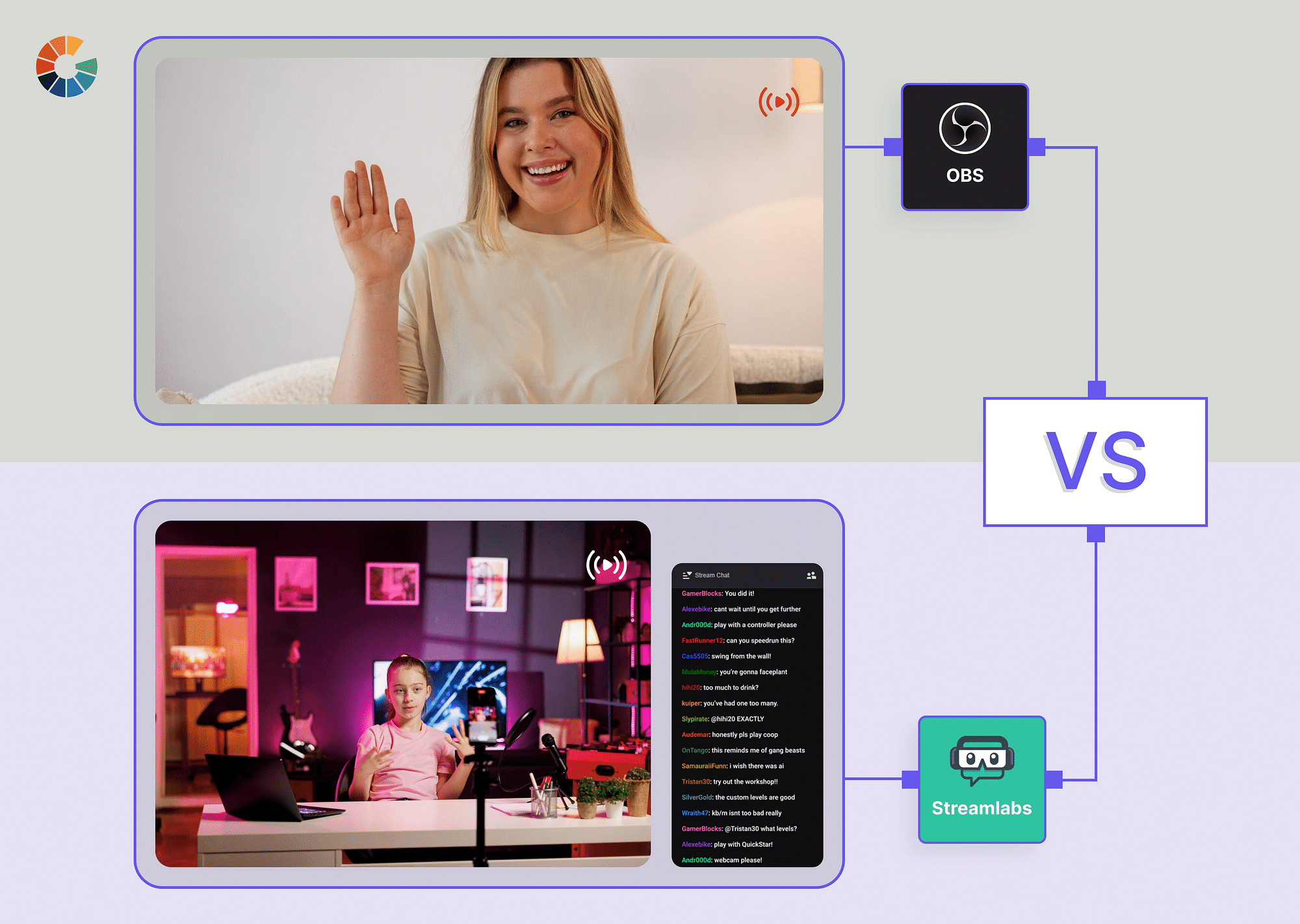Did you know that there are different ways to feed the video signal to your TV? Did you also know that those two methods have completely different meanings and implications? Unless you’re a broadcast engineer, probably not.
Television broadcasts are produced in two ways: interlaced and progressive scanning. Traditionally, television broadcasts were produced using a studio-to-antenna connection, but nowadays cable and OTT video streaming services are more popular. Broadcast TV is still widely accessible and free of charge (with sponsored ads). Televisions produce moving images that are broadcast from a studio to an antenna.
Interlaced vs progressive scanning can be pretty tricky concepts to get your head around, but they are both very important in understanding how your video signal works. Both interlaced and progressive have their own advantages and disadvantages. In this article, we’ll be covering everything you need to know about interlaced vs progressive scan, including examples of both modes in action. Let’s dive right in!
What is Progressive Scan?
As the name suggests, progressive scan is a process where every frame of the video signal is scanned in a progressive way. Each frame is scanned as a complete picture. Whereas in an Interlaced scan, every second frame is scanned to create a full picture. That is what makes interlaced scans different.
Schedule a Demo with Our Video Expert!
Discover how Gumlet can help you build a cutting-edge video streaming infrastructure.
Progressive scan is the more modern and efficient way of scanning a video signal. It was introduced alongside HDTV and was designed to address various issues with the interlaced scan method. Progressive scan takes significantly less time, compared to interlaced scan, which is why it has become the standard in modern video. With progressive scan, each frame is scanned and displayed as a whole. This means that progressive scan can be scanned and displayed much faster than interlaced scan.

Advantages of Progressive Scan
Here are some of the clear-cut advantages of using progressive scan:
- Better quality picture - By displaying each frame as a whole, progressive scan can produce better quality pictures with less noise and distortion.
- More accurate colors - Interlaced scan is known to cause issues with colors, especially with skin tones. This is because interlaced scan has issues with synchronizing the color information with the brightness information. With progressive scan, this issue is completely eliminated.
- Progressive scan is more suitable for 24 FPS video - If you’ve ever tried to display a 24 FPS video in a movie theater, you’ve probably noticed how the video is being sped up. This happens because movie theaters use a lower video frame rate, which is better for displaying movies without inducing motion sickness. Progressive scan makes it possible to display 24 FPS video in full on your home TV.
- Higher resolution - Progressive scan consumes less bandwidth, making it a more suitable choice for modern HDTVs. This allows progressive scan to provide a higher video resolution than interlaced scan.
But that’s not it. Like with everything else, progressive scans, too, come with their fair share of disadvantages. Let’s take a look at some of the disadvantages of progressive scan.
Disadvantages of Progressive Scan
Here are some disadvantages of progressive scan that you should keep in mind:
- Requires more bandwidth - While progressive scan produces better images and videos, it also requires more bandwidth than interlaced scan.
- More prone to image tearing - Because of the large number of frames in a single video, progressive scan is more prone to image tearing and other video distortions.
- Not suitable for live video - As we’ve already discussed, live video is best displayed with interlaced scan. This is because progressive scan can’t be “scanned” in real time.
Now, let’s move on and understand a bit about interlaced scan and how it works.
What is Interlaced Scan?
Interlaced scan works by scanning every second frame of a video signal. Every second frame is then combined to create a full video frame. It works by interlacing the video frames. Interlaced scan is the old way of scanning a video frame. While it can’t display the same quality as progressive scan, it is significantly faster.
In an interlaced scan, the frame is split into odd (1,3,5 …) and even (2,4,6 …) lines that are transmitted for 1/60 of a second, each of which constitutes a field. Each series of lines displayed is repeated over and over. This process occurs very quickly (1/60 of a second), resulting in only half the frame being transmitted at any one time. It is fast enough to keep viewers' eyes occupied, but there may be some flickering.

Advantages of Interlaced Scan
Here are some of the advantages of using the interlaced scanning approach:
- Better for recorded video - Since every second video frame is used to create a full video frame, interlaced scan is perfect for recorded videos.
- Interlaced scan is cost-effective - Interlaced scan requires less bandwidth, which makes it cheaper than progressive scan. That’s one of the main reasons why interlaced scan became the standard for analog TV.
- More resistant to image tearing - Interlaced scan is known to be more resistant to image tearing and other distortions caused by bandwidth issues.
- TV operating systems can be designed around interlaced scan - The fact that interlaced scan is the standard makes it easier for TV manufacturers to design their operating systems.
Let’s look at some of the disadvantages of interlaced scans as well.
Disadvantages of Interlaced Scan
Here are some of the key disadvantages of using interlaced scan for your purpose:
- Not suitable for live video - Interlaced scan is the standard for recording video. This means that it is also used to feed video to the live broadcast. However, it is not suitable for displaying real-time video, like sports events.
- Interlaced scan produces lower quality video - As we’ve already discussed, interlaced scan is not suitable for producing high-quality video.
- Not suitable for 24 FPS video - Interlaced scan is also not suitable for 24 FPS video.
- Interlaced scan is more prone to image tearing - Interlaced scan is more prone to image tearing than progressive scan. This is because interlaced scan requires more bandwidth than progressive scan.
Difference Between Progressive and Interlaced Video Scan
Comparison table between progressive and interlaced video scan
| Parameter | Progressive Scan | Interlaced Scan |
|---|---|---|
| Picture quality | Better picture quality | Lower picture quality |
| Image resolution | Higher image resolution overall | Relatively lower image resolution |
| Time to scan | Requires longer time to scan | Requires shorter time for scanning |
| Synchronization | Better for audio and image synchronization | Lesser audio and image synchronization |
| Bandwidth | Higher bandwidth | Lower bandwidth |
| Use cases | Better for 24FPS videos and live videos | Not suitable for 24FPS videos |
| Better for live videos | Better for recorded videos |
Which is better: Interlaced or Progressive?
Well, as we’ve discussed, progressive scan is clearly better in terms of quality, picture and audio synchronization. However, interlaced scan has its advantages, too. Interlaced scan is better for situations where bandwidth is an issue.
So, overall, progressive scan is better, but only if you’re dealing with high-quality content. If you’re dealing with low-quality content, you should use interlaced scan. That way, you can provide the best experience while consuming as little bandwidth as possible. If you’re writing a TV show, you should always use progressive scan. Progressive scan is the standard for modern video, so you should always use it. Interlaced scan is not really much suitable in that context.
Conclusion
Scanning a video signal is an essential part of the process of creating and displaying a video. While there are currently two ways of scanning a video signal, it is important to know their differences, so you can make an informed decision when creating your next video. With this article, we conveyed all the important differences and nuances there are to know regarding these two scans. With this knowledge, you should be in a much better position to make an informed decision when it comes to making a choice in terms of which scanning method to go for.
FAQs
1. Is 4K progressive or interlaced?
4k is progressive.
2. Why is interlaced video used?
Interlaced video is a technique for doubling the perceived frame rate of a display without consuming additional bandwidth. This method is commonly used in broadcast television and some video formats.
3. Is interlaced faster than progressive?
No, Progressive scan is faster than interlaced scan.
4. Which is better, 1080p or 1080i?
1080p is better than 1080i as it is more vivid and realistic.




